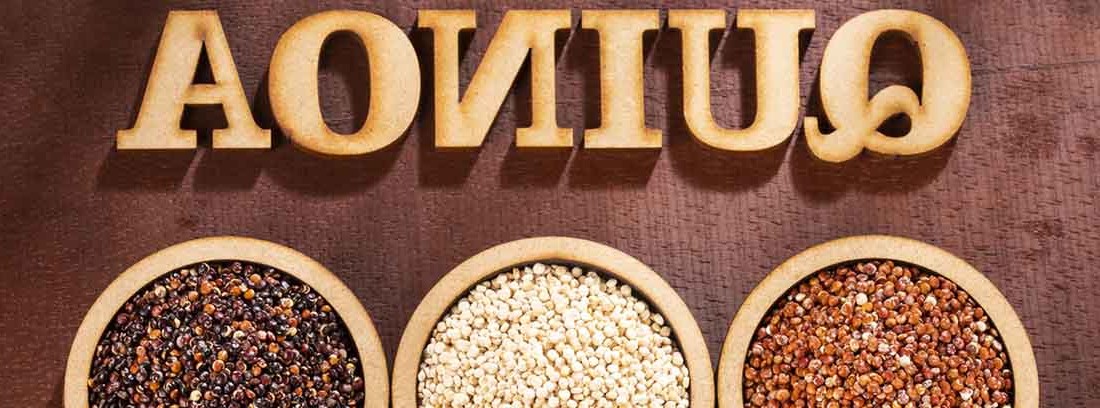Benefits of eating quinoa for our health

Due to its healthy properties, quinoa has been classified in the category of and, therefore, a very interesting food to consume regularly and follow a healthy lifestyle.
- Has a low glycemic index (GI), which is a measure used to assess how quickly a food raises the blood glucose level. So it is ideal for diabetics.
- Helps control cholesterol levels Thanks to its content in and its contribution of unsaturated fats with cardioprotective properties.
- Promotes intestinal transit thanks to the fact that the total fiber content reaches almost 10% of its composition, being approximately 20% soluble fiber content, and 80% insoluble. Insoluble fiber contributes to bulk up the stool and makes it pass through the intestinal transit faster, which helps prevent problems such as constipation or diverticulosis.
Nutritional composition of quinoa
Quinoa stands out for its high percentage protein (13.81% -21.9%). It also has a high content of essential amino acids, This makes it one of the few plant-based foods with a high-quality protein. But it also has a high content of carbohydrates low glycemic index, minerals like calcium, iron and magnesium, fatty acids omega 6 and omega 3, vitamin B2 and.
Protein
Quinoa contains all the essential amino acids to obtain high quality proteinTherefore, it is considered a protein of high biological value. Proteins are the nutrients that participate in more functions in the body, they form tissues, they fight against "invaders" that want to enter the body, they transport vitamins ...
Fiber
Quinoa mainly contributes insoluble fiber, typical of seeds, but also provides Soluble fiber. Insoluble fiber adds bulk to the stool and helps food pass through the digestive tract faster. Soluble fiber is one that captures water, forming a bulky gel-like substance that aids in digestion, softens and helps eliminate stool.
Iron
Iron is a mineral necessary for growth and development of the organism, participates in the production of hormones and connective tissue, as well as to manufacture the hemoglobin among the most prominent functions.
Calcium
It contains more than four times that of corn, almost three times that of rice and much more than wheat, which makes it easily absorbable by the body. Its intake helps avoid decalcification and osteoporosis. Calcium is responsible for many structural functions of the body's hard and soft tissues, as well as for the regulation of neuromuscular transmission of chemical and electrical stimuli, cell secretion, and blood coagulation.
Magnesium
Quinoa contains remarkable amounts of this mineral. Magnesium is responsible, among other functions, for maintaining a functioning adequate of the intestines, muscles and nerves, it also participates in the regulation of cardiac contraction, and is also part of bones and teeth.
3 Types of quinoa: white, red and black
- White quinoa: Also called royal quinoa, it is the best known variety, with a mild flavor, light and fluffy texture. Easily adapts to various types of recipes.
- Red quinoa: with a more intense flavor, it may be reminiscent of walnut. It is recommended to consume it in salads or with fruit. It contains more fiber and more carbohydrates than the other two varieties, making it ideal for those who require more energy.
- Black quinoa: It is a hybrid resulting from mixing quinoa with spinach, with a sweeter taste and crunchy texture.
- Its high content of essential amino acids makes it one of the few plant-based foods with a high-quality protein.
- Quinoa has a low glycemic index (GI), which is a measure used to assess how quickly a food raises the level of glucose in the blood.
- It should be washed with plenty of water before cooking.
Diploma in Human Nutrition and Dietetics Master in Pediatric Nutrition and Sports Nutrition
(Updated at Apr 13 / 2024)